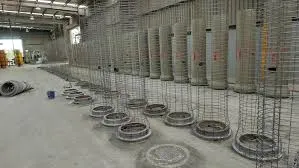- Afrikaans
- Albanian
- Amharic
- Arabic
- Armenian
- Azerbaijani
- Basque
- Belarusian
- Bengali
- Bosnian
- Bulgarian
- Catalan
- Cebuano
- China
- China (Taiwan)
- Corsican
- Croatian
- Czech
- Danish
- Dutch
- English
- Esperanto
- Estonian
- Finnish
- French
- Frisian
- Galician
- Georgian
- German
- Greek
- Gujarati
- Haitian Creole
- hausa
- hawaiian
- Hebrew
- Hindi
- Miao
- Hungarian
- Icelandic
- igbo
- Indonesian
- irish
- Italian
- Japanese
- Javanese
- Kannada
- kazakh
- Khmer
- Rwandese
- Korean
- Kurdish
- Kyrgyz
- Lao
- Latin
- Latvian
- Lithuanian
- Luxembourgish
- Macedonian
- Malgashi
- Malay
- Malayalam
- Maltese
- Maori
- Marathi
- Mongolian
- Myanmar
- Nepali
- Norwegian
- Norwegian
- Occitan
- Pashto
- Persian
- Polish
- Portuguese
- Punjabi
- Romanian
- Russian
- Samoan
- Scottish Gaelic
- Serbian
- Sesotho
- Shona
- Sindhi
- Sinhala
- Slovak
- Slovenian
- Somali
- Spanish
- Sundanese
- Swahili
- Swedish
- Tagalog
- Tajik
- Tamil
- Tatar
- Telugu
- Thai
- Turkish
- Turkmen
- Ukrainian
- Urdu
- Uighur
- Uzbek
- Vietnamese
- Welsh
- Bantu
- Yiddish
- Yoruba
- Zulu
Nov . 22, 2024 22:25 Back to list
marine shell and tube heat exchanger
Marine Shell and Tube Heat Exchanger
Marine shell and tube heat exchangers are critical components in many maritime applications, particularly for cooling and heating purposes. These specialized devices are designed to efficiently transfer thermal energy between two fluids while keeping them physically separated. Their robust design and effectiveness make them a preferred choice for a variety of marine environments, including onboard ships, offshore platforms, and naval vessels.
The construction of a shell and tube heat exchanger typically involves a series of tubes arranged within a cylindrical shell. One fluid flows through the tubes, while the other fluid circulates over the tubes within the shell. This arrangement allows for a large surface area for heat transfer, enabling efficient thermal exchange. The two fluids can be either liquids or gases, and they may operate at varying temperatures and pressures, depending on the specific application requirements.
One of the primary advantages of marine shell and tube heat exchangers is their versatility. They can handle a wide range of temperatures and pressures, making them suitable for diverse marine applications such as engine cooling, freshwater generation, and exhaust gas heat recovery. For instance, they are often used to cool seawater used in ship engines, helping to maintain optimal operating temperatures and enhance engine efficiency. Additionally, they facilitate the transfer of waste heat from exhaust gases, which can be utilized to heat freshwater through processes like distillation.
marine shell and tube heat exchanger

Corrosion resistance is another critical factor for marine heat exchangers, given the harsh environments they often operate in. Materials such as stainless steel, titanium, and even specialized alloys are frequently used to construct these units, as they provide the necessary durability against seawater and other corrosive agents. The selection of materials is crucial for ensuring long service life and minimizing maintenance needs.
The design of the heat exchangers also plays a vital role in their performance. Engineers must consider factors such as flow arrangement (counterflow, parallel flow, or crossflow), tube size, spacing, and baffle design to optimize heat transfer efficiency. Properly designed baffles enhance fluid flow and increase the turbulence, which further improves the heat transfer rate.
Furthermore, maintenance is essential to ensure the operational efficiency of these systems. Regular cleaning and inspection help prevent fouling, which can significantly reduce heat transfer efficiency and potentially lead to equipment failures. Additionally, advanced monitoring technologies can be implemented to track the performance of heat exchangers in real-time, allowing for timely interventions when necessary.
In summary, marine shell and tube heat exchangers are integral to the efficient thermal management systems in maritime operations. Their robust design, combined with material selection and engineering considerations, allows for effective heat transfer in challenging environments. As maritime technology continues to evolve, the efficiency and performance of shell and tube heat exchangers will likely improve, supporting the sustainability and operational efficiency of modern marine vessels. With ongoing innovations and improvements in design and materials, these exchangers will remain essential in meeting the demanding thermal management needs of the marine industry.
-
Premium Cast Iron Water Main Pipe: Durable, Corrosion-Resistant
NewsAug.03,2025
-
Durable Cast Iron Water Mains | AI-Optimized Systems
NewsAug.02,2025
-
High-Efficiency Propane Boiler for Baseboard Heat | Save Energy
NewsAug.01,2025
-
Premium Source Suppliers for Various Gray Iron Castings
NewsJul.31,2025
-
Durable Cast Iron Water Main Pipes | Long-Lasting
NewsJul.31,2025
-
High-Quality Cast Iron Water Main Pipe for Durable Infrastructure
NewsJul.30,2025


